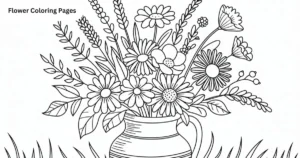Peonies are beloved flowers known for their lush beauty and sweet scent. But when it comes to pronunciation, many people are surprised to learn there’s more than one way to say peony. This simple word has sparked debates among gardeners, florists, and linguists alike.
In this article, we’ll dive deep into the pronunciation variations of peony, their origins, regional differences, and why both versions are correct in their own ways. Whether you’re a flower enthusiast or just curious, you’ll find the story behind this charming debate fascinating.
The Most Common Pronunciations
The two most common ways to pronounce “peony” are PEE-uh-nee and PEE-oh-nee. Both are widely accepted, though which you hear often depends on where you live or who you talk to.
The first pronunciation, PEE-uh-nee, tends to be faster and blends the sounds together. The second, PEE-oh-nee, slightly stretches the “o,” giving it a more formal or deliberate tone.
Where Each Pronunciation Is Popular
In the United States, regional accents heavily influence how “peony” is pronounced. In the Midwest and Southern parts of the country, PEE-uh-nee is often more common.
Meanwhile, in areas like New England and parts of the West Coast, you’ll more often hear PEE-oh-nee. Local culture and speech patterns make a significant difference in pronunciation habits.
Historical Evolution of the Word
The word “peony” traces back to ancient Greek, where it was known as paionia, named after Paeon, a physician to the gods. Over centuries, the word evolved through Latin and Old French before settling into English.
Language changes naturally over time, leading to different pronunciations depending on who adopted the word and how they adapted it. “Peony” is a perfect example of how languages blend and shift across generations.
British Versus American Pronunciation
In British English, you will often hear PEE-uh-nee, though some speakers lean toward a very subtle PEE-oh-nee. Overall, the British version tends to clip the middle syllable more sharply.
American English is slightly more varied, and both PEE-uh-nee and PEE-oh-nee are acceptable depending on the region. Differences in schooling, media exposure, and family background can influence which form a person uses.
Influence of Accents and Dialects
Accents play a huge role in the pronunciation of “peony.” Someone with a Southern American accent might emphasize the “uh” more heavily, making it sound almost like PEN-nee.
On the other hand, a Midwestern speaker might smooth out the vowels, keeping it closer to PEE-nee. Dialects aren’t just about new words—they affect how familiar words sound in surprising ways.
Which Pronunciation Is Correct?
Linguists generally agree that there is no single “correct” way to pronounce “peony.” Both versions—PEE-uh-nee and PEE-oh-nee—are widely accepted in English-speaking countries.
Dictionaries like Merriam-Webster and Oxford English Dictionary list multiple pronunciations. The flexibility simply reflects the richness of the English language and its adaptability over time.
How Media and Pop Culture Affect Pronunciation
Television shows, movies, and online videos often shape how we speak, including how we pronounce flower names like “peony.” For instance, a famous TV character saying PEE-oh-nee could popularize that version.
Similarly, viral TikToks or YouTube gardening channels might showcase one pronunciation over another, unconsciously guiding millions of viewers toward a certain way of speaking.
Personal Preference and Social Setting
At the end of the day, how you say “peony” often comes down to personal preference. Some people feel that PEE-uh-nee sounds more casual and friendly, while PEE-oh-nee might feel a bit more refined.
In social settings like weddings or flower shops, people sometimes consciously pick the pronunciation they believe sounds fancier or more professional. Context definitely matters!
Embracing Both Pronunciations
Rather than worrying about which version is “right,” it’s helpful to embrace both pronunciations of “peony.” Language is fluid, and small differences like this add color and diversity to communication.
Whether you say PEE-uh-nee or PEE-oh-nee, the important thing is that everyone knows you’re talking about one of the world’s most beautiful flowers. Both pronunciations celebrate the charm of language in their own way.
Read More: Are Peonies Toxic?
Conclusion
In the end, both pronunciations of “peony” PEE-uh-nee and PEE-oh-nee are perfectly acceptable. Regional accents, historical influences, and personal preferences all shape how people say this beautiful flower’s name. Language is naturally diverse, and these small differences make it even more fascinating.
Whether you favor one version or switch depending on the setting, the meaning remains the same: a symbol of beauty, romance, and elegance. So, the next time you admire a blooming peony, say it however feels right to you because in the world of language and flowers, there’s always room for variety.
FAQ’s
Are there two ways to pronounce peony?
Yes, the two common pronunciations are PEE-uh-nee and PEE-oh-nee.
Which pronunciation of peony is correct?
Both pronunciations are correct and widely accepted in English.
Why do people pronounce peony differently?
Regional accents, historical language changes, and personal habits influence pronunciation.
How is peony pronounced in British English?
In British English, it’s usually pronounced PEE-uh-nee.
Can media influence how peony is pronounced?
Yes, TV shows, movies, and online videos often shape pronunciation trends.









